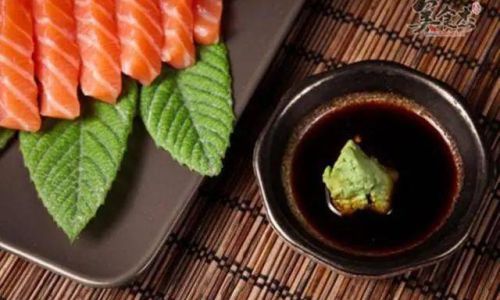Introduction: The Versatility of Salmon in Culinary Arts
In the vast realm of culinary delights, salmon stands out as a versatile fish that caters to diverse tastes and cooking preferences. Its rich, buttery flavor and firm, yet tender texture make it a favorite among chefs and home cooks alike. From grilled to smoked, baked to raw (as in sushi), salmon’s adaptability allows it to shine in various preparations. However, one question often arises among food enthusiasts: can salmon be enjoyed as a steamed dish? This article delves into the intricacies of steaming salmon, exploring its feasibility, benefits, techniques, and potential flavor profiles.
The Science Behind Steaming: Preserving Flavor and Nutrients
Steaming is a cooking method that involves using the heat from boiling water to cook food placed above it, typically in a basket or steaming rack. This technique is highly regarded for its ability to preserve the natural flavors, textures, and nutrients of food. Unlike boiling, which submerges food in water, steaming keeps the food item separate from the cooking liquid, thereby preventing the dilution of flavors and the loss of essential nutrients.
When it comes to salmon, steaming offers a gentle cooking environment that respects the fish’s delicate structure. The moist heat of steaming ensures that the salmon remains moist and tender, while also highlighting its inherent flavors. Moreover, steaming salmon is a healthier alternative to frying or basting with oils, as it requires minimal added fats and preserves the omega-3 fatty acids that salmon is renowned for.

Nutritional Benefits of Steamed Salmon
Salmon is a nutritional powerhouse, packed with essential nutrients that contribute to overall health. Its rich omega-3 fatty acids are particularly beneficial for heart health, reducing inflammation, and supporting brain function. Steaming salmon helps retain these valuable nutrients, making it an excellent choice for those seeking to incorporate more heart-healthy foods into their diet.
In addition to omega-3s, salmon provides high-quality protein, essential vitamins (such as vitamins D and B12), and minerals like selenium and potassium. Steaming preserves these nutrients better than some other cooking methods, such as frying or grilling, which can expose the fish to higher temperatures that can degrade some nutrients and promote the formation of unhealthy compounds.
Techniques for Steaming Salmon
Steaming salmon is a straightforward process, but mastering the technique requires attention to detail. Here are some steps and tips to ensure a successful outcome:
-
Selection of Salmon:
Choose fresh, high-quality salmon fillets with firm flesh and a clean, fresh scent. Avoid fillets with a strong fishy odor or slimy texture.
-
Preparation:
- Pat the salmon fillets dry with paper towels to remove excess moisture. This helps the seasoning adhere better and ensures even cooking.
- Season the salmon lightly with salt, pepper, and any herbs or spices of your choice. Lemon zest, dill, garlic, and ginger are popular complements that enhance salmon’s flavor.
-
Setting Up the Steamer:
- Fill a large pot or steamer with water and bring it to a boil. Ensure the water level does not touch the steaming basket or rack.
- Place the seasoned salmon fillets in the steaming basket, spacing them out to allow for even heat distribution.
-
Steaming Time:
- The steaming time for salmon varies based on thickness and personal preference for doneness. Generally, thicker fillets may take around 8-12 minutes, while thinner ones may be ready in 6-8 minutes.
- Use a meat thermometer to check the internal temperature of the salmon. It should reach 145°F (63°C) for safe consumption, but you can remove it slightly earlier if you prefer a more medium-rare texture.
-
Resting and Serving:
- Once steamed, allow the salmon to rest for a few minutes. This helps redistribute juices within the fish, ensuring a moist and flavorful final texture.
- Serve the steamed salmon with a side of your choice, such as steamed vegetables, rice, or a light salad. A drizzle of extra virgin olive oil, a squeeze of lemon juice, or a dollop of yogurt-based sauce can elevate the dish further.
Flavor Profiles and Seasoning Ideas
Steamed salmon’s mild flavor makes it an excellent canvas for a variety of seasonings and flavors. Here are some ideas to inspire your culinary creativity:
-
Asian-Inspired:
Marinate the salmon in a mixture of soy sauce, rice vinegar, sesame oil, garlic, and ginger before steaming. Garnish with chopped scallions, sesame seeds, and a drizzle of chili oil for a fiery kick.
-
Mediterranean:
Rub the salmon with olive oil, lemon zest, and a blend of dried oregano, thyme, and minced garlic. Steam and serve with a side of roasted vegetables and a dollop of tzatziki.
-
Herb-Crusted:

Combine fresh herbs like parsley, dill, and chives with breadcrumbs, lemon zest, and a pinch of salt and pepper. Press this mixture onto the salmon fillets before steaming. Serve with a lemon-butter sauce for added richness.
-
Latin American:
Season the salmon with a mix of cumin, chili powder, garlic powder, and lime zest. Steam and serve with avocado slices, black beans, and a squeeze of fresh lime juice.
-
Simple and Elegant:
Keep it simple by seasoning the salmon with just salt, pepper, and a squeeze of lemon juice. Steam and serve with a side of buttered asparagus and a wedge of lemon for a refreshing, elegant dish.
Tips for Perfect Steamed Salmon
-
Avoid Overcooking:
Salmon is best enjoyed when cooked to a medium-rare to medium doneness. Overcooking can lead to a dry, unappealing texture. Use a meat thermometer to ensure accurate cooking times.
-
Use a Steamer Basket:
A dedicated steamer basket helps keep the salmon above the boiling water, preventing direct contact that could lead to overcooking or waterlogged fish.
-
Freshness Matters:
Always use fresh salmon for steaming. Frozen salmon can be used, but ensure it is thawed properly before cooking to maintain texture and flavor.
-
Experiment with Seasonings:
Don’t be afraid to experiment with different seasoning blends and marinades. Steamed salmon is a versatile dish that can be adapted to suit various cuisines and palates.
Conclusion: Embracing the Simplicity of Steamed Salmon
In conclusion, salmon can indeed be enjoyed as a steamed dish, offering a healthy, flavorful, and nutritious meal option. Its adaptability to various seasonings and cooking techniques makes it a versatile choice for both everyday meals and special occasions. By mastering the art of steaming, you can preserve salmon’s natural beauty, enhancing its delicate flavors and textures while retaining its essential nutrients. Whether you prefer a simple preparation or a more elaborate flavor profile, steaming salmon offers a delightful way to enjoy this cherished fish in a whole new light. So, the next time you’re in the kitchen, consider giving steamed salmon a try—you might be surprised by how much you enjoy its subtle elegance and pure, unadulterated taste.





0 comments